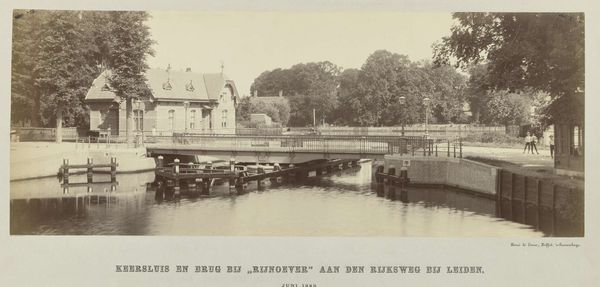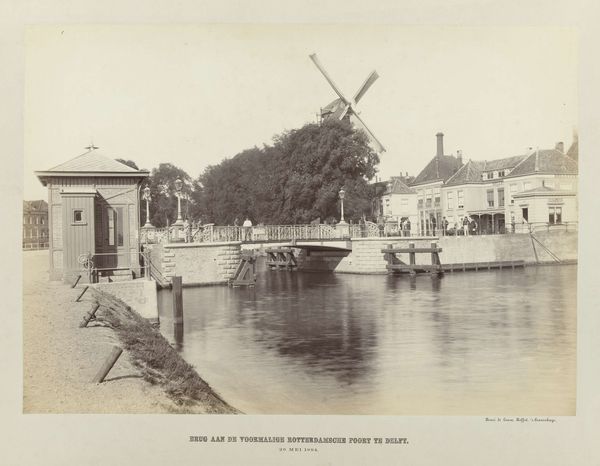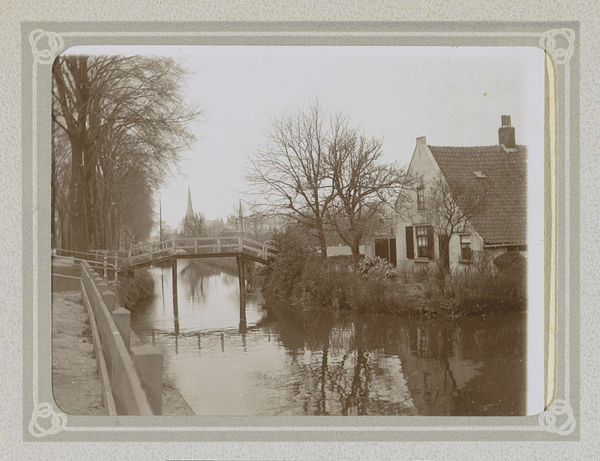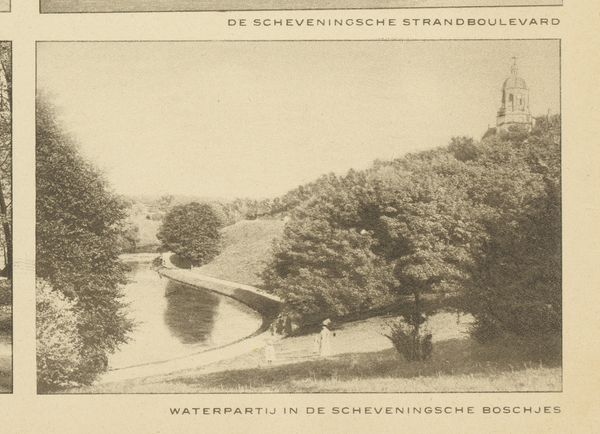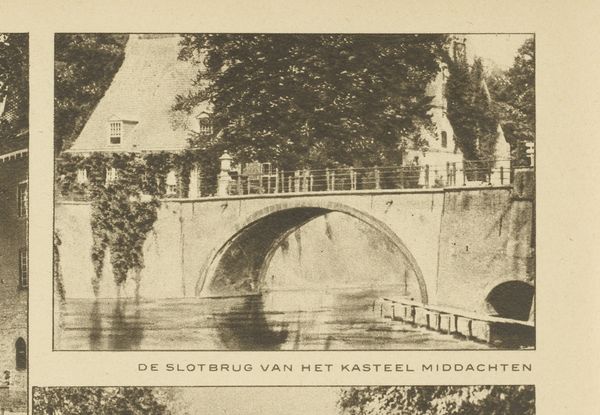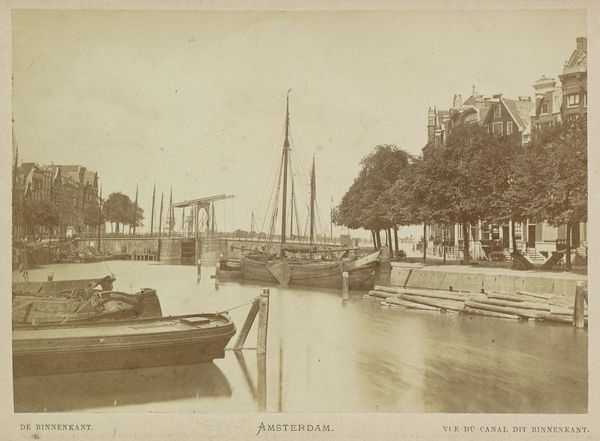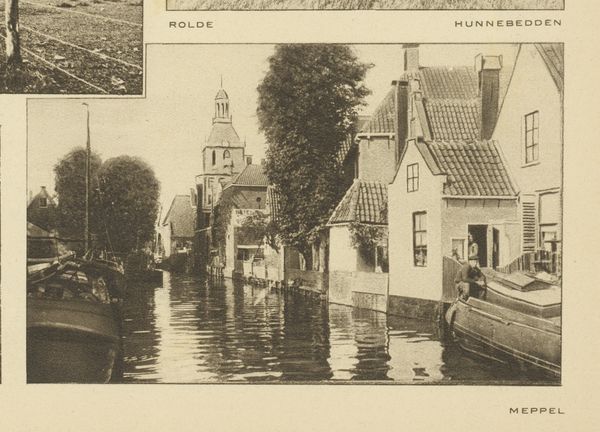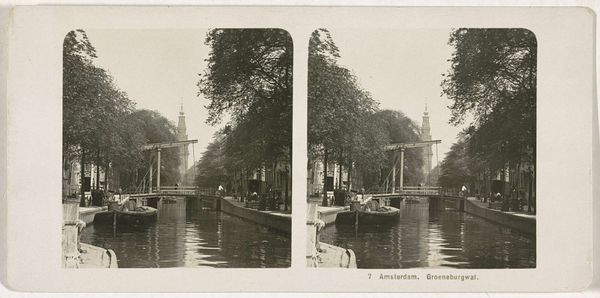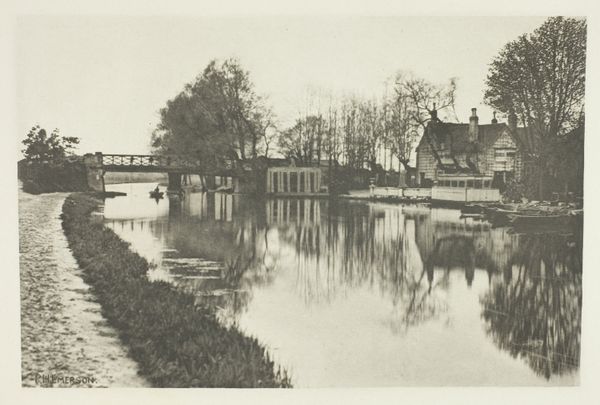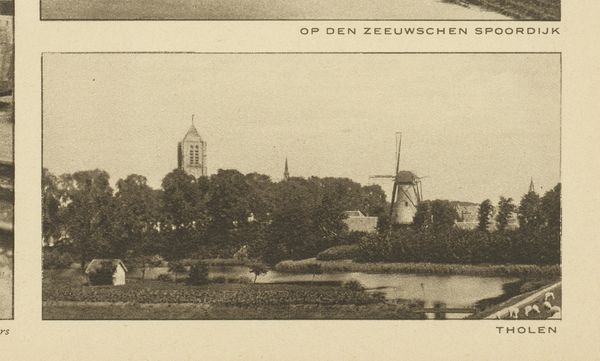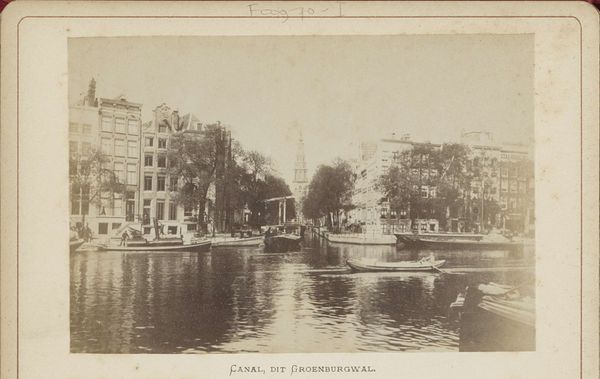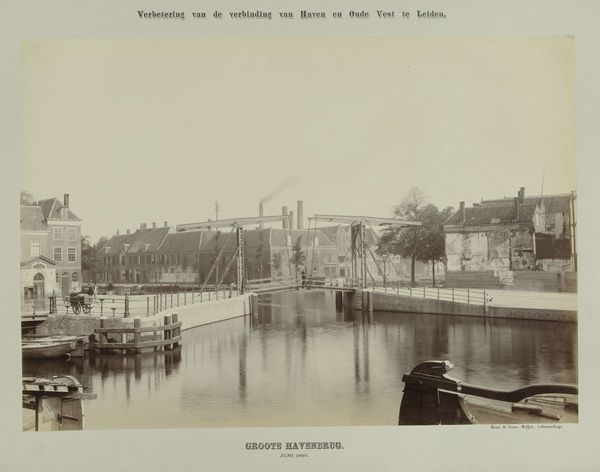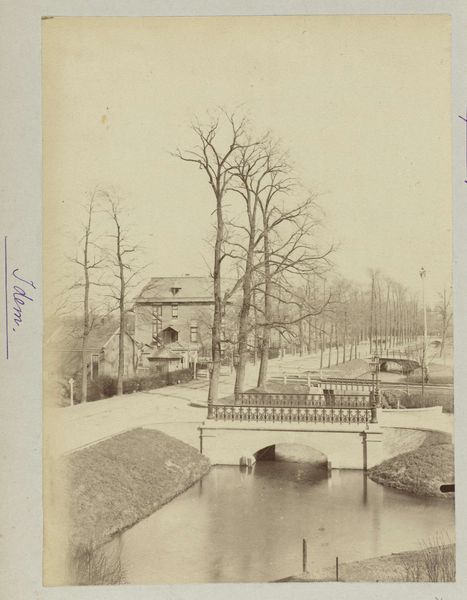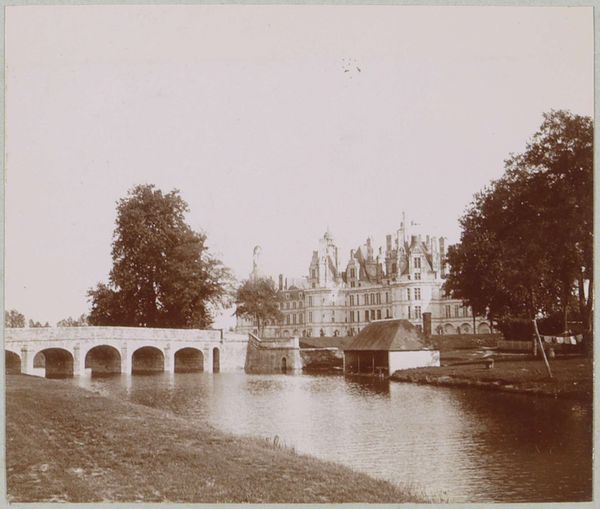
#
pencil drawn
#
aged paper
#
yellowing background
#
photo restoration
#
parchment
#
pencil sketch
#
old engraving style
#
historical photography
#
old-timey
#
19th century
Dimensions: height 77 mm, width 118 mm
Copyright: Rijks Museum: Open Domain
Curator: Looking at this artwork, a scene of "Gezicht op de Loosduinsevaart," dating from before 1915, one can’t help but notice the aged quality of the paper, seemingly a pencil sketch. Editor: It evokes such a placid atmosphere. The symmetry of the bridge, doubled in the water's reflection, and the delicate, muted tones create a sense of tranquility. The composition itself is quite striking in its balance. Curator: Indeed. Considering it was crafted before 1915, we must reflect on the tools and resources available at the time. Pencil sketches allowed for portability, easily documenting landscapes and waterways integral for trade and transportation. How might its purpose be related to surveying or perhaps even preliminary studies for larger works? Editor: Semiotically, the bridge functions as both a connector and a divider—linking communities, while its reflection adds a layer of duality. And look at the background with architectural structures, a combination of vertical and horizontal lines! Curator: Precisely! But let’s also consider how it intersects with industrialization. The canal wasn’t merely scenic; it served as a crucial artery for commerce. How do artistic renderings like this intersect with societal needs and labor practices related to construction and canal maintenance? Editor: A beautiful tension. Visually, I'm drawn to how the aging of the paper adds another layer to its texture and overall aesthetic quality, enriching our aesthetic reading with age. Curator: Thinking about the materiality brings into view the history of art-making. Mass production had to affect how images were circulated. This print had to become accessible as both documentation and artwork to influence decisions. Editor: In the end, it's this interplay of form and feeling that makes the image compelling. The pencil medium here captures both details but also the overall feeling and sensation the author experienced at that particular place in time. Curator: By considering both the formal properties and historical contexts, it has become much more enriched with complex meaning.
Comments
No comments
Be the first to comment and join the conversation on the ultimate creative platform.
